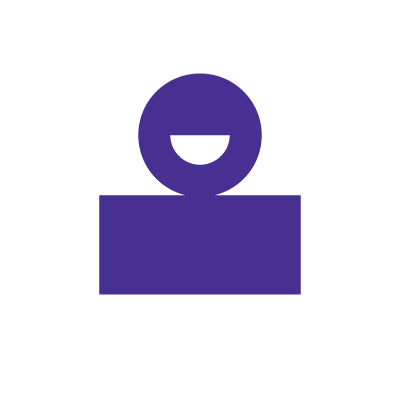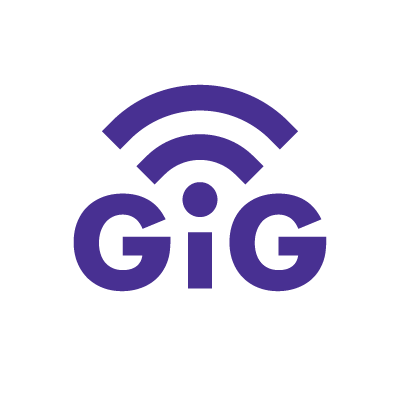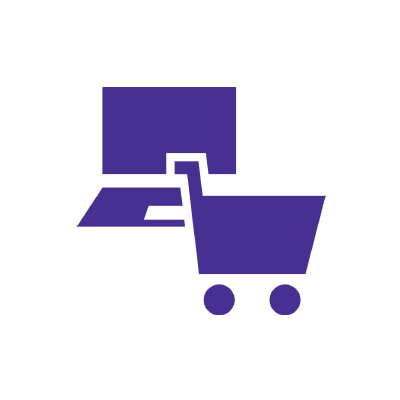10 tips and best practices for cybersecurity awareness month

Recent research from WatchGuard shows that a cyberattack takes place every 39 seconds, which translates into over 2,200 cases per day.
If you’re learning about cybersecurity or looking to bring cybersecurity awareness into your home, read on to discover more about protecting your personal data and sensitive information this Cybersecurity Awareness Month.

eero Plus
eero Plus protects your family online with a password manager to safely create, store and share passwords, virus and malware protection and a VPN that lets you browse the web safely and securely.
What is Cybersecurity Awareness Month?
Launched in October of 2004 by the United States Department of Homeland Security and the National Cyber Security Alliance, Cybersecurity Awareness Month is an annual campaign to raise awareness about the importance of cybersecurity and encourage people and businesses to take steps to protect their information online.
In 2024 from October 1st to October 31st, Cybersecurity Awareness Month will feature events, webinars and resources dedicated to cybersecurity tips.
Why cybersecurity awareness is important
Cyberthreats, like phishing or malware, continue to grow in sophistication and frequency. Last year alone, 2023 saw a 72% increase in data breaches since 2021, which held the previous all-time record.
Cybersecurity awareness helps people understand the risks of cybercrime and adopt cybersecurity best practices that protect sensitive data, and hopefully reduce the occurrence of breaches.
Tips & best practices for Cybersecurity Awareness Month
To help prepare you for Cybersecurity Awareness Month, let’s take a look at some of the latest cybersecurity trends and best practices to follow this October.
1. Assess your cybersecurity risks
To kick off Cybersecurity Awareness Month, start by understanding how you manage your data.
- Where do you store your data?
- Could someone easily access your data?
Look into your devices like computers, laptops, hard drives, mobile devices, tablets and even cloud storage. Consider which platforms you may have shared personally identifiable information (PII) with, such as Social Security numbers or credit card details.
Then, evaluate how you are protecting your data.
- Are you using firewalls or virtual private networks (VPNs)?
- Do you use multi-factor authentication and set up complex passwords?
- Do you regularly monitor your network traffic to minimize your risk?
If you’re worried about establishing a baseline for your cybersecurity issues, use our network security checklist to assess how your current security practices hold up.
2. Use a password manager
The right thing to do may seem like rotating many strong, unique passwords.
However, managing dozens of passwords may be overwhelming, and you might find yourself reusing or simplifying them, which makes you more vulnerable.
In fact, 30% of users have experienced security breaches due to weak passwords.
Password managers, like 1Password (which are included in services with eero Plus), offer better security. They store all login credentials in an encrypted vault and only require you to remember one master password.
Switch & save
Astound is the #1 cable ISP
Stream live content, work, surf, game and connect to multiple devices with speeds up to 1500* Mbps through our ultra‑reliable fiber‑powered network.*

3. Use an application-based authenticator
Unlike text-based or voice-based authentication, which are susceptible to interception through SIM swapping or other vulnerabilities, application-based authenticators provide a more robust layer of security.
Microsoft reports that 99.9% of attacks can be blocked by multi-factor authentication (MFA).
MFA apps generate time-sensitive codes which add an extra step in verifying your identity, beyond just a password. Apps like Google Authenticator ensure that even if your primary credentials are compromised, access to your accounts remains secure through additional authentication.
4. Use a VPN, especially on public WiFi
Especially on public WiFi, protect your data with a Virtual Private Network. Public WiFi networks are often unsecured, leaving your personal information exposed to hackers. Public networks in cafes, restaurants and hotels are the most common locations for a WiFi attack.
When using a VPN to encrypt your internet connection, you prevent anyone on the same network from viewing your browsing activity, passwords or any sensitive information, ensuring the information you transmit and receive is secure and anonymous.
5. Be aware of AI voice cloning
AI voice cloning is an emerging cybersecurity threat. By using artificial intelligence, speech samples and machine learning, malicious users can mimic a person’s voice.
These bad actors can then recreate speech patterns, making them nearly indistinguishable from the original. Hackers may exploit this to impersonate individuals and bypass security protocols that rely on voice authentication.
53% of adults share their voice data online at least once per week. Most audio can be lifted from publicly accessible websites, such as videos on social media. The more you expand your network and share personal details, the more you may be exposing yourself to risks like identity theft or malicious impersonation.
6. Secure your devices
Even though you may think your device is secure, there are many touchpoints where a bad actor may be able to access your data. Public charging stations have risks similar to the those of public WiFi.
If you’ve ever been on-the-go and needed to charge, you may have used a USB charging station without much thought. These stations can be a hotbed for cybersecurity attacks, as 51% of malware attacks are designed for USB devices.
To avoid these breaches, don’t allow anyone to plug a USB into your phone, and use your own wall plug and cable when in need of a charge. You may want to consider investing in a portable battery to keep your phone charged when in need.
Find your speed
What speed do you need?
Maybe you just need the essentials—or maybe you need to unleash the ultimate internet speed. Explore your options to get the best experience for every device in your home.

7. Be suspicious during peak shopping times
During major shopping events like Black Friday, Cyber Monday and Amazon Prime Day, online traffic increases. More online shoppers means hackers can target unsuspecting consumers through fake websites, ads, phishing emails and payment services.
These hackers may be trying to steal your online identity. In fact, Cequence, a cybersecurity company, reports that retail cybercrime is up nearly 700%.
During peak shopping times, be cautious of unsolicited emails or messages offering unbelievable deals, asking for personal information or containing suspicious links. Verify the source before clicking on any links.
Shop only on reputable websites that you trust. Look for “https://” in the URL and a padlock symbol in the address bar, indicating that the site uses secure encryption.
8. Keep software up to date
Outdated software risks can leave you open to a variety of hacks, including ransomware, malware, data breaches and more. Even in 2024, 22% of consumers still use Windows 7 on their PCs, even though the operating system lost mainstream support more than a year ago.
Keeping your software up to date is one of the simplest yet most effective ways to protect yourself from cyber threats. Regular updates help patch vulnerabilities and improve the overall security of your devices and data. By applying these updates, you’re helping to ensure your home network isn’t exposed.
The easiest way to stay protected is by enabling automatic updates for your operating system, router, antivirus software, browsers and applications. You’ll know you’re always running the latest, most secure versions without having to manually check for updates.
9. Use anti-virus and anti-malware software
SafetyDetective reports that an estimated 25% of PCs are not protected with anti-virus software, leaving them on average 5.5 times more likely to be infected. Using reputable anti-virus and anti-malware software is critical. To make the most of your software, run regular scans to reduce your risk of cyber threats.
Set your software to run in the background for continuous monitoring of your system for suspicious activity and threat prevention. Make sure to install your anti-virus and anti-malware software on all your devices, not just your computer.
Smartphones, tablets and even smart home devices can be vulnerable to attacks and should be protected accordingly.
10. Teach your children cybersecurity best practices early
Teaching children about cybersecurity early is essential to protect them from online threats like cyberbullying, phishing and identity theft. In 2022, some 1.7 million children fell victim to a data breach, meaning 1 in every 43 kids had personal information exposed or compromised.
By starting cybersecurity education young, kids can develop the knowledge and skills needed to navigate the digital world safely and responsibly.
The right cybersecurity resources for kids can introduce key concepts such as recognizing scams, safeguarding personal information and handling cyberbullying. Adults can also learn how to content filter and monitor their kids’ online activity using parental controls. The right foundation can make for a more secure home.
Cybersecurity solutions for individuals
Explore these cybersecurity solutions to keep your network secure.
eero Secure
eero Secure protects your family with safety features including internet backup, parental controls and ad blocking. Additionally, Astound’s Enhanced Whole Home WiFi subscription includes eero Secure at no extra cost.
eero Plus
Building on eero Secure, eero Plus adds dynamic DNS, a 1Password family plan, Malwarebytes protection, a VPN and WiFi analytics.
Learn more: Is eero Plus worth it?
By integrating with your existing eero system, eero Plus ensures that all devices on your network are safeguarded against cyber threats, making it a valuable investment for those who prioritize online safety.
Secure your home WiFi
Secure your home WiFi by encrypting your network with WPA3, updating your router’s software and changing default settings to protect your personal information from hackers. Additional measures like turning off remote management and using a VPN add layers of security, ensuring a safer online experience for everyone in your home.
Set up a guest network
Setting up a secure guest WiFi network is a smart way to protect your home network while providing internet access to visitors. By isolating guest devices from your main network, you can prevent cyber threats from spreading and keep your personal data and devices safe.
Additionally, a guest network allows you to manage bandwidth and ensure better performance for both your primary network and your guests.
Build your plan
Your perfect plan is just a click away
Get the speeds, WiFi, mobile and TV plans you need all at an affordable price. Bundle your services with Astound and see how much you can save.

Conclusion
As we head into Cybersecurity Awareness Month, it’s more important than ever to be vigilant.
By staying informed and practicing the best cybersecurity habits—such as using strong passwords, setting up secure networks and keeping your software up to date—you can significantly reduce your risk of falling victim to online threats.
This year, take time to implement these practices in your home. Whether it’s securing your home WiFi, using a VPN or teaching your children about online safety, these actions will help protect your data. Make cybersecurity a priority during Cybersecurity Awareness Month to ensure a safe and secure online experience for you and your household.
Create the perfect bundle
Get the speed, WiFi, mobile and TV that’s just right for you.
*Internet speeds may vary & are not guaranteed. Certain equipment may be required to reach advertised speeds. DOCSIS 3.1 modem with 2.5GE physical LAN port is required for 1 Gigabit speeds and higher. See astound.com/yourspeed for why speeds may vary. To view Astound’s FCC Network Management Disclosure see astound.com/policies-disclaimers. Limited time offer, subject to change without notice. Advertised promotional price valid for duration of the stated promotional period from time of service activation. Regular rates apply after promotional period ends. Equipment not included and is extra. Modem required for Internet service. Enhanced Wi-Fi or Whole Home Wi-Fi (eero) not included and is add’l. Offer includes a monthly discount for enrollment in both automatic payments (autopay) & paperless billing (e-bill). Discount of $10 applies with automated bank account deduction or a discount of $5 applies with automated credit/debit card payment. Valid email address required. Must complete enrollment in autopay and e-bill within 30-days of placing the order. Without enrollment, the discount does not apply. Discount appears on bill within 3 bill cycles after enrolling. If either autopay or e-bill is canceled, services are changed, or the account is not in good standing, then the monthly discount will be discontinued. Offer valid only for new residential Astound customers or previous customers with an account in good standing who have not had Astound service within the last 60 days. Any add’l services, equipment, premium channels & other tiers of service are subject to an add’l charge & regular increases. A one-time activation fee of $14.99 (in addition to any installation fees) will be charged & is subject to change. Add’l fees apply for taxes & surcharges, and are subject to change. WA RESIDENTS: unless otherwise specified, price does not include a 2% Regulatory Administration Fee. For details about taxes, fees & surcharges visit astound.com/fees. No early termination fees apply in the event service is terminated in advance of the promotional end date. Customer is responsible for any accrued service charges in the event service is canceled. Subject to credit check. Not all services & speeds are available in all areas. A multi-product discount may be available to qualifying addresses with a subscription to mobile, TV, and 600 Mbps Internet or higher. Discounts will be reflected in your order cart at time of purchase, if available. Other restrictions may apply. All services are governed by the Astound Customer Terms & Conditions that can be found at astound.com/policies-disclaimers. © 2025 Radiate HoldCo, LLC d/b/a Astound Broadband. All rights reserved.
While we have made every attempt to ensure that the information contained in this site has been obtained from reliable sources, Astound is not responsible for any errors or omissions, or for the results obtained from the use of this information. All information in this site is provided “as is”, with no guarantee of completeness, accuracy, timeliness and without warranty of any kind, express or implied, including, but not limited to warranties of performance, merchantability and fitness for a particular purpose. Certain links in this site connect to other websites maintained by third parties over whom Astound has no control. Astound makes no representations as to the accuracy or any other aspect of information contained in other websites.
eero Plus is available for an additional $9.99/month and requires subscription to whole home WiFi powered by eero.




















